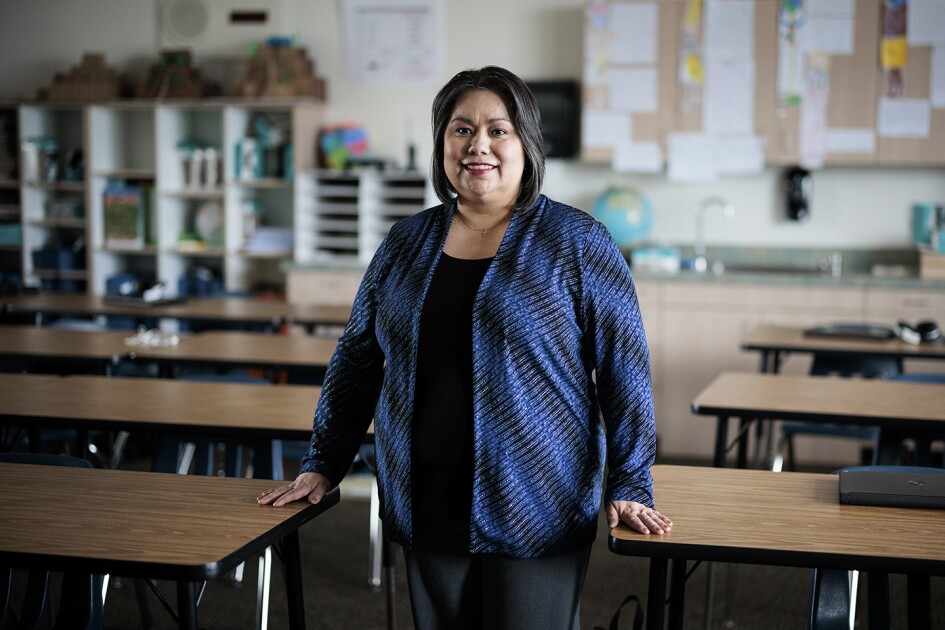The mental health of teenagers across the United States has grown steadily worse for more than a decade, with the COVID-19 pandemic exacerbating the trend.
The most recent data from the U.S. Centers for Disease Control and Prevention found that 42 percent of high school students in 2021 reported feeling so sad or hopeless for at least two consecutive weeks in the previous year that they stopped engaging in their usual activities, up from 26 percent in 2009.
Schools and districts are trying different strategies in response, such as hiring more school psychologists and counselors or partnering with outside mental health providers.
One strategy schools could try is giving students dedicated time within the school day to receive mental health support, said Ava Havidic, a senior at Millennium 6-12 Collegiate Academy in Tamarac, Fla. Havidic is a student facilitator for the National Association of Secondary School Principals’ Student Leadership Network on Mental Health. (She also serves as a student adviser for the Broward County school board and is president of the executive council of the National Student Board Member Association).
In an interview with Education Week, Havidic discussed what she’s learned about her peers’ needs and other ways educators can help improve student mental health.
This interview has been edited for brevity and clarity.
Could you explain the work of the Student Leadership Network on Mental Health?

[There are] seven students who are carefully selected and vetted to lead as mental health network facilitators. We don’t give advice in terms of, “OK this is the professional way to do it.” What we do is we can relate to the students, and we can see the struggles that they’re having on social media, or with new standardized testing coming out—like the digital SAT that we did a workshop on. We can home in on the contemporary elements of what’s changing in education and what’s changing in our society with technology. We take that and we try to understand how students are coping with it. We want to make sure we have this community providing support for [students] if they need it and get those conversations started.
What has your experience as a facilitator been like?
It’s one of the most eye-opening [experiences], because you can do so much with the role beyond just attending the meetings and giving your perspective in your community. We were able to speak to principals who are asking for suggestions for their school. We recommended having time periods, [such as] a free class period that’s designated for psychiatric support for students or for help so they can see a counselor. [The principals] were able to take up those suggestions and give us updates on how they’re implementing it in their schools.
We do presentations for the students about gratitude, gratefulness, growth mindset—different things that are so important in today’s society. We also get to talk to the adults and have that intergenerational connection between both, seeing how the adults are trying to improve circumstances for students and seeing how students are trying to improve within themselves. This whole role is so eye-opening in that you can grow yourself, but also you can see how we’re progressing in breaking the mental health stigma.
What have you heard from your peers about their mental health and the factors that affect it?
I would say a lot has to do with how busy our lives are—with standardized tests, balancing your extracurriculars, and having family responsibilities. A lot of students in my school and my community are low-income, so a lot of us have to work two to three jobs sometimes. Seeing that we have so many responsibilities, we all find it hard to prioritize our mental health or even have it in school curriculum or school time when we can say, “OK, these 30 minutes are really granted for us to prioritize how we’re thinking and our mindset.”
A lot that I’ve been hearing from students is where can we find these [mental health] resources? How can we find it within ourselves to prioritize it every single day? We sometimes do journaling in our online meetings. We also do community talks and share what we do to relax. We share our personal experiences with our struggles and we’re honest about the real struggles of being a high schooler or a middle schooler and growing up in today’s society.
What do you think students want educators to know about their mental health?
Students really want to have staff that’s designated in their schools for psychiatric support. Another thing I would say is implementing [mental health support] into the daily [school] schedule. If it’s not on the daily schedule, then on a more frequent basis within school hours. I think if we continue to bring [mental health discussions] in the classroom, that it’s going to become more normalized, and students will find it less of a struggle in their daily lives. A third thing is something we often talk about: social media. [Students need support] in knowing when to take social media detoxes, knowing when to take a break from the phone and to focus on how you’re feeling and how you can improve yourself.
Anything else you want educators to know about student mental health?
Youth voice and educational equity go hand in hand, so the more students that you’re able to hear from and understand their stories, the better of a chance we have ensuring every student is safe and feeling comfortable in their school environment and is successful in the future. [We could start by putting] more students on school boards and making efforts to seek out students who want to be leaders.










